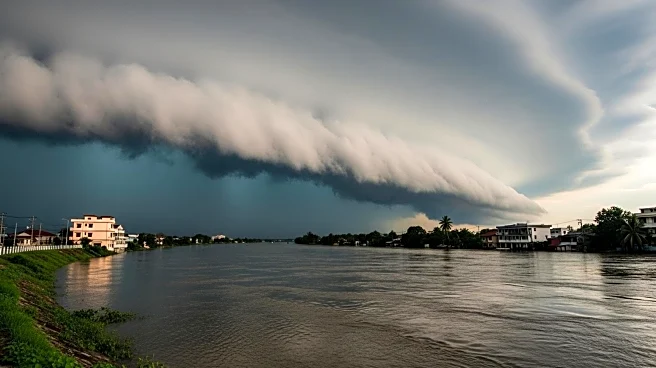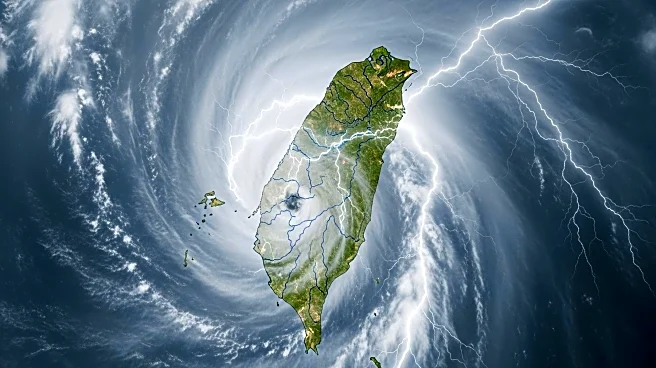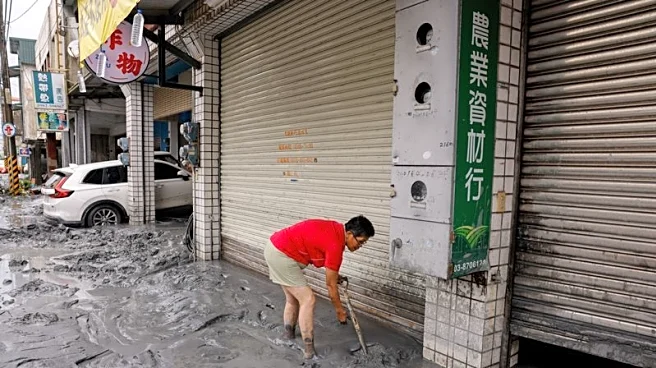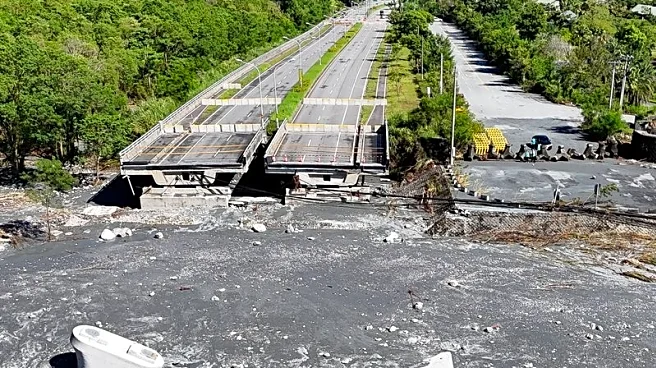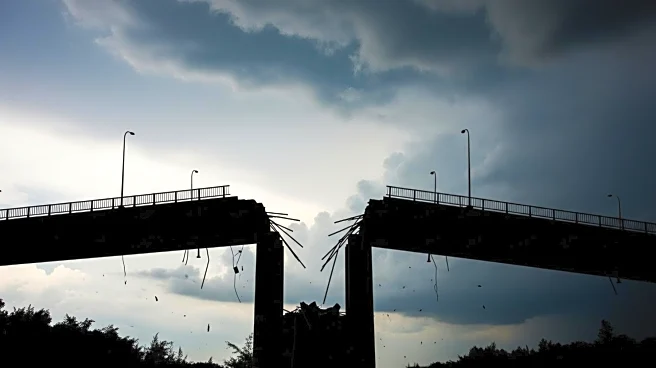What is the story about?
What's Happening?
Super Typhoon Ragasa has caused significant destruction in Taiwan, particularly in the eastern county of Hualien. The typhoon led to the bursting of a barrier lake, which released a massive amount of water, resulting in a deadly flood. The flood has claimed at least 14 lives, injured 32 people, and left 46 individuals unaccounted for. Survivors in Guangfu township reported receiving no warning from authorities before the disaster struck, despite previous alerts from the academic community about the potential overflow of the lake. The floodwaters reached heights of up to the second floor in some areas, causing extensive damage and trapping many residents, particularly the elderly.
Why It's Important?
The lack of timely warnings and effective evacuation measures highlights significant gaps in disaster preparedness and response in Taiwan. The incident underscores the need for improved communication and coordination between local authorities and the academic community to prevent such tragedies. The disaster has also had a profound impact on the local community, particularly affecting the elderly population who are less likely to receive timely information. The event raises questions about the adequacy of infrastructure and emergency planning in regions prone to natural disasters, emphasizing the importance of developing robust systems to protect vulnerable populations.
What's Next?
Local authorities are expected to review and improve their emergency response protocols to prevent future incidents. There may be increased pressure on the government to invest in infrastructure that can withstand natural disasters and to enhance communication systems for timely warnings. The academic community may continue to advocate for better monitoring and predictive measures to prevent similar occurrences. Additionally, there could be efforts to provide support and resources to the affected communities to aid in recovery and rebuilding.
Beyond the Headlines
The disaster has highlighted the challenges faced by rural and aging populations in accessing timely information during emergencies. It also raises ethical considerations regarding the responsibility of authorities to ensure the safety of all residents, particularly those who are most vulnerable. The incident may lead to broader discussions on the role of technology and innovation in disaster management and the importance of integrating scientific research into public policy.
AI Generated Content
Do you find this article useful?
